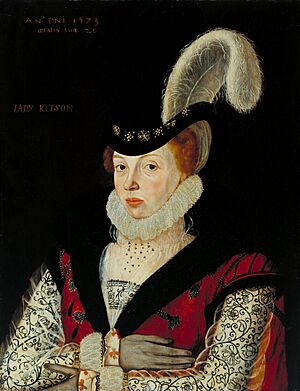John Wilbye facts for kids
John Wilbye (born in 1574, died in 1638) was a famous English composer. He is best known for writing madrigals. Madrigals are a type of song for several voices, usually without instruments. They were very popular during the Renaissance period.
Contents
Early Life and Beginnings
John Wilbye was born in a town called Brome in Suffolk, England. His father was a tanner, someone who prepares animal hides.
Musical Career and Patrons
Wilbye was supported by the powerful Cornwallis family. They helped him with his music. He worked for many years at Hengrave Hall, near Bury St. Edmunds. He started working there in the 1590s. Elizabeth Kitson and her husband, Sir Thomas Kitson, owned Hengrave Hall. They were very interested in music.
Wilbye also spent time in London, where the Kitson family had a house. His first book of madrigals was published in London in 1598. These songs were described as "newly composed." He dedicated this book to Sir Charles Cavendish.
Wilbye also worked with a printer named Thomas East. In 1600, Wilbye helped proofread a book of songs by another famous composer, John Dowland. After Thomas East died, Wilbye's second book of madrigals was printed by East's nephew, Thomas Snodham.
Famous Compositions
Wilbye's main focus was writing madrigals. He published two collections of them. The first was in 1598, and the second was in 1608. Together, these books contained sixty-four different songs.
Wilbye is one of the most famous English madrigal composers. Many of his pieces are still loved today. Some of his well-known madrigals include Weep, weep mine eyes, Weep, O mine eyes, and Draw on, sweet night. He also wrote a poem called Love not me for comely grace. His music is known for its beautiful singing parts. He was also very good at matching the music to the words.
Later Life and Legacy
John Wilbye never got married. After Lady Kitson passed away in 1628, Wilbye left Hengrave Hall. He moved to Colchester to live with Lady Kitson's daughter, Mary Darcy. He died in Colchester and is buried there. His music continues to be performed and enjoyed by many.
See also
 In Spanish: John Wilbye para niños
In Spanish: John Wilbye para niños
- Ledger, Philip, ed. (1978). The Oxford Book of English Madrigals. Oxford University Press.


